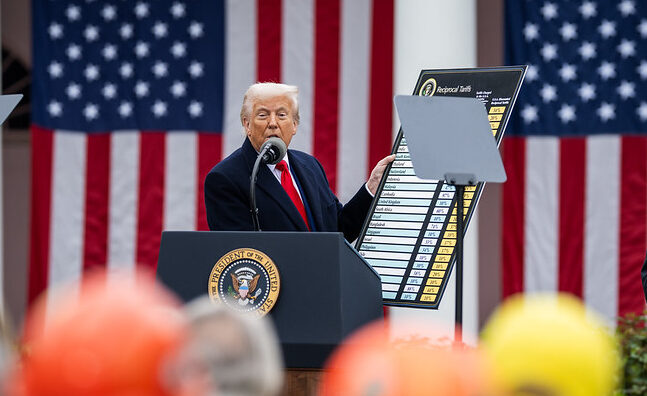Trump walking back the tariffs is no mystery. The original order clearly stated that countries could earn a reprieve if they agreed to better terms for America.
President Trump’s sudden decision to pause the tariffs—first imposed between April 2 and 9, 2025, in the amount of 10% or more—has drawn sharp criticism from the same media outlets that initially opposed the tariffs themselves.
Now that the president has suspended most of them for 90 days, commentators are calling the move everything from “mysterious,” to “weak,” to “nefarious.”
Some have even floated bizarre accusations of insider trading, despite the obvious fact that both the tariff announcement and the corresponding stock dip were public knowledge.
Putting aside these implausible claims, the mainstream press has settled on three main theories for why Trump paused the tariffs.
First, they point to market turmoil: the S&P 500 dropped in the days after the tariffs were announced, then jumped 9.5% after the pause, leading some to suggest Trump was panicked by the market’s reaction.
Second, they cite the bond market: yields on the 10-year Treasury spiked to 4.45%, raising fears of inflation and recession, which they say pressured the administration into backtracking.
And third, they point to international and corporate pressure: over 75 countries expressed interest in negotiating trade terms with the United States, while business leaders, including JPMorgan CEO Jamie Dimon, warned that unchecked tariffs could trigger a global economic slowdown.
But of these three explanations, only the last one holds water—and it is explicitly spelled out in the April 2 executive order. The tariffs were never meant to be permanent.
On the contrary, the order clearly stated that any country that chose to lower its own trade barriers could negotiate for an exemption or reduction.
The goal was to bring countries to the table, and now that more than 75 of them have done so, the pause simply marks a successful step in the process.
Far from being a retreat, it’s a calculated fulfillment of the policy’s intended function. Moreover, the fact that tariffs on Chinese imports were increased to 125% at the same time proves this wasn’t a softening of Trump’s trade stance—it was a sharpening of it, aimed directly at the country most responsible for global trade imbalances.
President Trump’s decision to pause the tariffs imposed in early April 2025 is being mischaracterized as a backpedal, mystery, or even a scandal by many in the media.
In reality, the 90-day pause is entirely consistent with the objectives clearly outlined in the April 2 executive order titled “Regulating Imports with a Reciprocal Tariff to Rectify Trade Practices that Contribute to Large and Persistent Annual United States Goods Trade Deficits.”
Since the tariffs were first applied, over 75 countries expressed interest in entering trade negotiations with the United States.
Some countries, such as South Korea and the United Kingdom, reportedly agreed to reduce certain tariff and non-tariff barriers or at least committed to formal talks aimed at achieving reciprocity.
In response, the administration paused the blanket tariffs for these nations while continuing to increase pressure on countries like China, which did not demonstrate reciprocal intent. Chinese imports now face a 125% tariff, up from the base 10%.
Critics argue that the pause contradicts Trump’s hardline stance, but the executive order explicitly authorizes tariff reductions for countries that “take significant steps to remedy non-reciprocal trade arrangements.”
Section 4(c) of the order states: “Should any trading partner take significant steps to remedy non-reciprocal trade arrangements and align sufficiently with the United States on economic and national security matters, I may further modify the HTSUS to decrease or limit in scope the duties imposed under this order.”
This is not a loophole or reversal—it is the mechanism built into the plan from the beginning. Section 2 of the order reinforces that these tariffs are a tool to “rebalance global trade flows” and would be imposed “until such time as I determine that the underlying conditions… are satisfied, resolved, or mitigated.”
Furthermore, the order spells out the justification for such flexibility, citing non-reciprocal tariff rates, non-tariff barriers, suppressed foreign consumption, and dependency on foreign supply chains as threats to U.S. economic and national security. The pause, then, is not a concession but a reward for cooperation and progress.
By misrepresenting this policy milestone as a retreat or scandal, critics ignore the actual content of the order. The pause is not a contradiction—it is the clearest sign yet that the strategy is working.
Read the full article here
